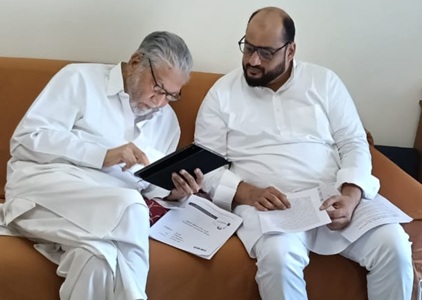For ideal risk management in infrastructure finance, it is vital that the capital market infrastructure and the microstructure of the financial market aid such effective risk management. For the Indian economy, infrastructure investors must have access to more financial instruments to hedge risks. Essentially, the financial markets require greater microstructure.
India needs a liquid bond future to be the central focal point of the market. True, past attempts to create a functional bond futures market haven’t yielded the required results. But from a risk management perspective, a bond future such as the US Ten-Year Future or the Japanese Government Bond Future is central to hedge outright “duration risk”. Because this future allows market participants to hedge the risk from an outright movement in interest rates and instead switch into “curve risk”.
In common parlance, “curve risk” is the risk from the movement in the interest rate differential between two points on the yield curve. The not-so-successful attempts in the past have valuable lessons for us which must be factored in future attempts in this regard.
To further boost long-dated debt markets, the importance of improving liquidity across the government bond curve, especially in the long-dated tenors beyond 20 years, is beyond question. Having a deep and liquid government bond market will allow market participants to hedge “curve risk”.
For example, for an investor who wants to lend for 25 years to a corporate entity (through a loan or a corporate bond), the investor is primarily interested in the risk of the corporate balance sheet. The investor’s interest is driven by their expertise that allows them to value and understand corporate credit.
With both “duration risk” and “curve risk” hedged, the investor is left with the “spread risk” between the 25-year bond issuance and the government curve. Enabling investors to get access to instruments that allow them to manage risks they specialise in, will be the real driver behind creating successful long-end lending in Indian infrastructure.
Additionally, India needs to develop the onshore interest rate swap market further. The Reserve Bank of India (RBI) has initiated steps to improve liquidity in this market, but we need to continue to do so in the foreseeable future. Swaps allow investors and market participants to hedge duration (outright interest rate risk) and have exposure to the spread risk between the bond and the swap rate.
As an example, if a highly rated government agency was involved in the construction of infrastructure projects and wanted to issue 30-year debt to finance the project. A liquid swap market would enable more market participants to subscribe to the bond if they can hedge the interest rate risk using an interest rate swap.
The investor investing in the bonds is primarily interested in the credit quality of the agency issuing the bonds. The investor’s expertise might be exclusively in analysing the “spread risk” and not necessarily in predicting the direction of interest rates. A functional interest rate swap market will allow both the investor who is comfortable taking the outright interest rate risk and the investor who is solely interested in the “spread risk” to be a market participant. Essentially, a more significant pool of capital can be mobilised through the availability of swaps.
The creation of liquid and functional markets in bond futures, government bonds and interest rate swaps is essential for infrastructure financing in India. These instruments allow the infrastructure market participants to allocate the various risks to the institution best equipped to manage the risk, thereby leading to an efficient market.
For infrastructure projects and companies to succeed not only must construction, legal and operational risk be allocated to the institution best equipped to handle the risk, but also the financial risks in the market be allocated to the institution best equipped to handle it. Not only is the risk managed better, but the cost of credit is lower for good financial assets as market specialists can charge the right risk premium instead of overcharging to create a buffer for a risk they are ill-equipped to manage.
A functional financial market also reduces the dependency on bank loans to finance infrastructure in India. Less reliance on banks for infrastructure financing ought to be a priority, especially considering the issues Non-performing loans (NPAs) plaguing the banking sector.
The development of current capital markets for a more robust financial microstructure will involve deregulation of markets to an extent like allowing greater foreign participation in Indian financial markets. For sure, allowing foreign participation in financial markets will add volatility to markets. However, despite the increased volatility, well developed financial markets are worth considering as a tool to boost Indian infrastructure. Additionally, it is hard to obtain a Pareto-optimal policy decision.
(Taponeel Mukherjee heads Development Tracks, an infrastructure advisory firm. The views expressed are personal. He can be contacted at taponeel.mukherjee@development-tracks.com or @Taponeel on Twitter)?
—IANS






0 Comments